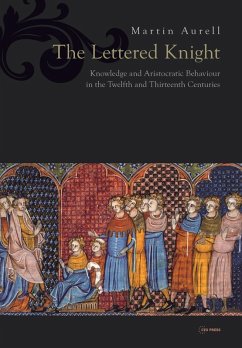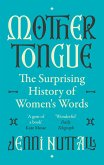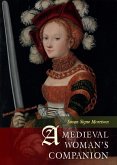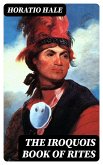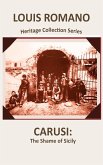Lettered Knight (eBook, ePUB)


Alle Infos zum eBook verschenken

Lettered Knight (eBook, ePUB)
- Format: ePub
- Merkliste
- Auf die Merkliste
- Bewerten Bewerten
- Teilen
- Produkt teilen
- Produkterinnerung
- Produkterinnerung

Hier können Sie sich einloggen

Bitte loggen Sie sich zunächst in Ihr Kundenkonto ein oder registrieren Sie sich bei bücher.de, um das eBook-Abo tolino select nutzen zu können.
The encounter between knight and science could seem a paradox. It is nonetheless related with the intellectual Renaissance of Twelfth-Century, an essential movement for Western history. The knight is not only fighting in battles, but also moving in sophisticated courts. He is interested on Latin classics and reading, and even on his own poetry. He supports "e;jongleurs"e; and minstrels and he likes to have literary conversations with clerics, who try to reform his behaviour, which is often brutal. These lettered warriors, while improving they culture, learn how to repress their own…mehr
- Geräte: eReader
- mit Kopierschutz
- eBook Hilfe
- Größe: 1.42MB
- FamilySharing(5)
![Mother Tongue (eBook, ePUB) Mother Tongue (eBook, ePUB)]() Jenni NuttallMother Tongue (eBook, ePUB)3,99 €
Jenni NuttallMother Tongue (eBook, ePUB)3,99 €![Hidden Interests in Credit and Finance (eBook, ePUB) Hidden Interests in Credit and Finance (eBook, ePUB)]() James B. GreenbergHidden Interests in Credit and Finance (eBook, ePUB)34,95 €
James B. GreenbergHidden Interests in Credit and Finance (eBook, ePUB)34,95 €![History of American Socialisms (eBook, ePUB) History of American Socialisms (eBook, ePUB)]() John Humphrey NoyesHistory of American Socialisms (eBook, ePUB)2,49 €
John Humphrey NoyesHistory of American Socialisms (eBook, ePUB)2,49 €![The Iroquois Book of Rites (eBook, ePUB) The Iroquois Book of Rites (eBook, ePUB)]() Horatio HaleThe Iroquois Book of Rites (eBook, ePUB)0,49 €
Horatio HaleThe Iroquois Book of Rites (eBook, ePUB)0,49 €![Medieval Woman's Companion (eBook, ePUB) Medieval Woman's Companion (eBook, ePUB)]() Susan Signe-MorrisonMedieval Woman's Companion (eBook, ePUB)8,95 €
Susan Signe-MorrisonMedieval Woman's Companion (eBook, ePUB)8,95 €![The Iroquois Book of Rites (eBook, ePUB) The Iroquois Book of Rites (eBook, ePUB)]() Horatio HaleThe Iroquois Book of Rites (eBook, ePUB)0,49 €
Horatio HaleThe Iroquois Book of Rites (eBook, ePUB)0,49 €![Carusi (eBook, ePUB) Carusi (eBook, ePUB)]() Louis RomanoCarusi (eBook, ePUB)6,99 €
Louis RomanoCarusi (eBook, ePUB)6,99 €-
-
-
Dieser Download kann aus rechtlichen Gründen nur mit Rechnungsadresse in A, B, BG, CY, CZ, D, DK, EW, E, FIN, F, GR, HR, H, IRL, I, LT, L, LR, M, NL, PL, P, R, S, SLO, SK ausgeliefert werden.
- Produktdetails
- Verlag: Central European University LLC
- Seitenzahl: 468
- Erscheinungstermin: 30. März 2017
- Englisch
- ISBN-13: 9789633862353
- Artikelnr.: 49274504
- Verlag: Central European University LLC
- Seitenzahl: 468
- Erscheinungstermin: 30. März 2017
- Englisch
- ISBN-13: 9789633862353
- Artikelnr.: 49274504
- Herstellerkennzeichnung Die Herstellerinformationen sind derzeit nicht verfügbar.
Scholasticism, reading and writing 1.3 'Literature' and orality 1.4 The
lettered and the unlettered 1.5 The cleric and the knight 1.6 Courtesy and
the civilisation of mores2. Knighthood and Literacy 2.1 Schooling and
teaching children to read and write 2.1.1 Sons faced with the choice of
taking up arms or the calling of the cloister 2.1.2 The first teachers:
family, private tutors, and courtly clerics 2.1.3 In the monastic,
cathedral and parish schools 2.1.4 From cloister to secular life 2.1.5
Italian precocity and pragmatic knowledge 2.1.6 Methods of learning, new
programs and the spread of writing in the vernacular 2.2 The Latin of the
knights 2.2.1 The Latin skills of Anglo-Norman knights 2.2.2 The Italian
educated nobility 2.2.3 Semi-literate laymen 2.2.4 Book collectors and
patrons3. Knighthood and Literary Creation 3.1 The court and literary
social life 3.1.1 Castles transformed into palaces Halls, rooms and gardens
A literary setting 3.1.2 Literature intended for performance Ladies holding
salon Dancing, jeux partis and dialogues 3.1.3 Minstrels and professional
performers Wide-ranging skills The dissemination of political songs Rivalry
with the knights and clerics A more positive image 3.2 The Knight Writers
3.2.1 Songs: a preference for the brief genre The troubadours on love and
war Northern trouveres and Germanic Minnesänger 3.2.2 Romances, sagas and
other fictional genres: a rare form of writing The Grail, love and war in
French The German ministerials Italy, compilers and encyclopaedists Snorri
Sturluson's sagas Impiety or religiosity? 3.2.3 History and memory: telling
the Crusade Overseas adventure in oc and oïl The Catalan-Italian wars
around the Mediterranean 3.3 Learned Women 3.3.1 The education of girls
Preceptors and schools Convent education Disparate educational levels
3.3.2 Women readers The indispensable Psalter Receiving love poems and
letters 3.3.3 Women writers Women epistolarians Marie de France Trobairitz,
hagiographers and visionaries 3.3.4 The superiority of feminine knowledge?
4. Clerical Instruction and Civilizing Knightly Mores 4.1 War and the
codifying of violence 4.1.1 The moral of the story 4.1.2 Rebuking greed,
violence and vanity Pillaging and murder Hunting, tournaments and games
4.1.3 The chivalrous ideal Warring under the king for peace and justice The
knighthood and dubbing Sparing human lives The crusade as armed pilgrimage
The paradox of the soldier monks 4.1.4 The internalisation of persuasive
arguments? 4.2 Manners: mastering movement and speech 4.2.1 Courteous
clerics 4.2.2 Instructional books on civility 4.2.3 Clothing and attire
Cleanliness and elegance Shame and immodesty 4.2.4 Self-control in gestures
4.2.5 Table manners 4.2.6 The art of pleasant conversation 4.3 Love:
refinement and self-control 4.3.1 The patient, enduring and meek lover
4.3.2 Perfecting oneself through love 4.3.3 Classical knowledge and courtly
love The debate on knights and clerks in love 4.4 Religion: the warrior's
piety 4.4.1 The lettered knights and theological thought 4.4.2 Courtliness
and piety 4.4.3 Mass attendance and the dangers of Pharisaism 4.4.4
Meditating at church, invoking the Holy Virgin, and other forms of devotion
4.4.5 Love for fellow-men, alms and voluntary poverty 4.4.6 Confession and
penance 4.4.7 The knight's ....
Scholasticism, reading and writing 1.3 'Literature' and orality 1.4 The
lettered and the unlettered 1.5 The cleric and the knight 1.6 Courtesy and
the civilisation of mores2. Knighthood and Literacy 2.1 Schooling and
teaching children to read and write 2.1.1 Sons faced with the choice of
taking up arms or the calling of the cloister 2.1.2 The first teachers:
family, private tutors, and courtly clerics 2.1.3 In the monastic,
cathedral and parish schools 2.1.4 From cloister to secular life 2.1.5
Italian precocity and pragmatic knowledge 2.1.6 Methods of learning, new
programs and the spread of writing in the vernacular 2.2 The Latin of the
knights 2.2.1 The Latin skills of Anglo-Norman knights 2.2.2 The Italian
educated nobility 2.2.3 Semi-literate laymen 2.2.4 Book collectors and
patrons3. Knighthood and Literary Creation 3.1 The court and literary
social life 3.1.1 Castles transformed into palaces Halls, rooms and gardens
A literary setting 3.1.2 Literature intended for performance Ladies holding
salon Dancing, jeux partis and dialogues 3.1.3 Minstrels and professional
performers Wide-ranging skills The dissemination of political songs Rivalry
with the knights and clerics A more positive image 3.2 The Knight Writers
3.2.1 Songs: a preference for the brief genre The troubadours on love and
war Northern trouveres and Germanic Minnesänger 3.2.2 Romances, sagas and
other fictional genres: a rare form of writing The Grail, love and war in
French The German ministerials Italy, compilers and encyclopaedists Snorri
Sturluson's sagas Impiety or religiosity? 3.2.3 History and memory: telling
the Crusade Overseas adventure in oc and oïl The Catalan-Italian wars
around the Mediterranean 3.3 Learned Women 3.3.1 The education of girls
Preceptors and schools Convent education Disparate educational levels
3.3.2 Women readers The indispensable Psalter Receiving love poems and
letters 3.3.3 Women writers Women epistolarians Marie de France Trobairitz,
hagiographers and visionaries 3.3.4 The superiority of feminine knowledge?
4. Clerical Instruction and Civilizing Knightly Mores 4.1 War and the
codifying of violence 4.1.1 The moral of the story 4.1.2 Rebuking greed,
violence and vanity Pillaging and murder Hunting, tournaments and games
4.1.3 The chivalrous ideal Warring under the king for peace and justice The
knighthood and dubbing Sparing human lives The crusade as armed pilgrimage
The paradox of the soldier monks 4.1.4 The internalisation of persuasive
arguments? 4.2 Manners: mastering movement and speech 4.2.1 Courteous
clerics 4.2.2 Instructional books on civility 4.2.3 Clothing and attire
Cleanliness and elegance Shame and immodesty 4.2.4 Self-control in gestures
4.2.5 Table manners 4.2.6 The art of pleasant conversation 4.3 Love:
refinement and self-control 4.3.1 The patient, enduring and meek lover
4.3.2 Perfecting oneself through love 4.3.3 Classical knowledge and courtly
love The debate on knights and clerks in love 4.4 Religion: the warrior's
piety 4.4.1 The lettered knights and theological thought 4.4.2 Courtliness
and piety 4.4.3 Mass attendance and the dangers of Pharisaism 4.4.4
Meditating at church, invoking the Holy Virgin, and other forms of devotion
4.4.5 Love for fellow-men, alms and voluntary poverty 4.4.6 Confession and
penance 4.4.7 The knight's ....
